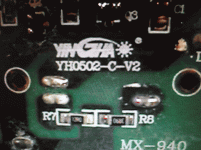watlers_world
Experienced Member
GiGaBiTe, I admit that solar lights and moonshine do sound somehow related.
Still, referring to Amazon as a black market sounds somewhat awkward.
Now we feel Haunted Living with the feeling that perhaps the LED strings were sold by the oriental Al Capone of LED lights.
ABS plastic? 750F? I don't know about that...
I had noticed that this plastic fades colors and breaks down with only the help of the great outdoors and time
These LED lights are hardly the piece de resistance.
I must have used the wrong words, perhaps I should have said,
Dead Haloween lights impedance.
However you look at it, these lights grow o-LED fast.
Still, referring to Amazon as a black market sounds somewhat awkward.
Now we feel Haunted Living with the feeling that perhaps the LED strings were sold by the oriental Al Capone of LED lights.
ABS plastic? 750F? I don't know about that...
I had noticed that this plastic fades colors and breaks down with only the help of the great outdoors and time
These LED lights are hardly the piece de resistance.
I must have used the wrong words, perhaps I should have said,
Dead Haloween lights impedance.
However you look at it, these lights grow o-LED fast.




